NIMBioS Calendars: Events Seminars Live Streaming Visitors Working Groups Workshops Tutorials Other
2014 Archive: NIMBioS Seminars
 In conjunction with the interdisciplinary activities of the National Institute for Mathematical and Biological Synthesis (NIMBioS), a seminar series on topics in mathematical biology is hosted at NIMBioS every other Tuesday at 3:30 p.m. (unless otherwise noted) in Hallam Auditorium, Room 206, Claxton Building, 1122 Volunteer Blvd.
Seminar speakers focus on their research initiatives at the interface of mathematics and many areas of the life sciences. Light refreshments are served in the 1st floor visitor breakroom beginning 30 minutes before each talk. Faculty and students from across the UT community are welcome to join us.
In conjunction with the interdisciplinary activities of the National Institute for Mathematical and Biological Synthesis (NIMBioS), a seminar series on topics in mathematical biology is hosted at NIMBioS every other Tuesday at 3:30 p.m. (unless otherwise noted) in Hallam Auditorium, Room 206, Claxton Building, 1122 Volunteer Blvd.
Seminar speakers focus on their research initiatives at the interface of mathematics and many areas of the life sciences. Light refreshments are served in the 1st floor visitor breakroom beginning 30 minutes before each talk. Faculty and students from across the UT community are welcome to join us.
Video Archive of NIMBioS Seminars
Archived Seminar Calendars:
2020
2019
2018
2017
2016
2015
2014
2013
2012
2011
2010
2009
NIMBioS Seminar Abstracts
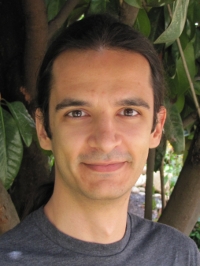 Time/Date: 3:30 p.m., Tuesday, December 2
Time/Date: 3:30 p.m., Tuesday, December 2Location: Hallam Auditorium, Room 206, Claxton Building, 1122 Volunteer Blvd.
Speaker: Ioannis Sgouralis, NIMBioS postdoctoral fellow
Topic: Mathematical modeling of renal complications induced by cardiac surgery
Abstract: Renal hypoxia is an important pathway in the development of acute kidney injury, a common complication of cardiac surgery performed under cardiopulmonary bypass (CPB). In this talk, I will present a mathematical model of kidney's physiology that can be used for the assessment of the conditions promoting renal hypoxia that are observed during CPB. The model represents the fundamentals of a nephrovascular unit: blood flow control, glomerular filtration, and sodium reabsorption. Renal oxygenation is given by the balance of oxygen consumption and oxygen supply, mainly determined by sodium reabsorption and blood flow, respectively. The model is used to simulate the effects of hypotension, hemodilution, and hypothermia. Simulations suggest that the rise in body temperature following the main phase of CPB increases disproportionally medullary oxygen consumption and drives the kidney into a hypoxic state which may result in renal damage. Click here for more information. Seminar flyer (pdf).
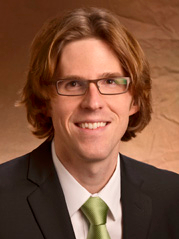 Time/Date: 3:30 p.m., Tuesday, November 25
Time/Date: 3:30 p.m., Tuesday, November 25Location: Hallam Auditorium, Room 206, Claxton Building, 1122 Volunteer Blvd.
Speaker: Steven Abel, Chemical and Biomolecular Engineering, Univ. of Tennessee, Knoxville
Topic: Deconstructing signal transduction at the cell membrane
Abstract: Cells orchestrate responses to their environment by means of biochemical reaction networks that propagate molecular signals from the cell membrane to the interior of the cell. These signal transduction networks involve many components interacting in a noisy environment, and mathematical modeling is an essential tool for understanding how they collectively interact in space and time to generate reliable responses. Many key signaling reactions occur at the cell membrane, yet how the membrane environment influences the collective behavior of signaling networks remains poorly understood. In this talk, we use theoretical and computational methods rooted in statistical mechanics to investigate (i) how the membrane environment influences emergent properties of signaling networks, and (ii) what mechanisms control the spatial organization of membrane-associated molecules when cells are in contact. In the first part, we use stochastic methods to study signaling networks that exhibit bi-stability. We find that confining proteins to a membrane-like environment can markedly alter the emergent behavior by altering protein mobility, protein concentration, and spatiotemporal correlations between pairs of molecules. In the second part, we use field-theoretic methods to study the binding and subsequent spatial reorganization of complementary molecules on apposed cell membranes. When two or more molecular complexes with different natural lengths are present, the species segregate into distinct spatial regions, even in the limit of vanishing membrane surface tension and bending rigidity. This result is unexpected, as minimization of membrane bending energy is often suggested to be the driving force for molecular segregation. Click here for more information. Seminar flyer (pdf).
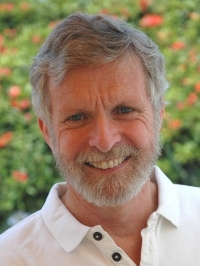 Time/Date: 3:30 p.m., Tuesday, November 18
Time/Date: 3:30 p.m., Tuesday, November 18Location: Hallam Auditorium, Room 206, Claxton Building, 1122 Volunteer Blvd.
Speaker: Robert Boyd, Biological Anthropology, Arizona State Univ. and NIMBioS Postdoctoral Fellows Invited Distinguished Visitor
Topic: Does reciprocity explain human cooperation?
Abstract: Humans cooperate extensively with unrelated individuals. While there is some controversy about large-scale cooperation, most authors agree that small scale cooperation is sustained by reciprocity. However, the theoretical work that supports this conclusion is not consistent with observed behavior in other social vertebrates. I will argue that existing work underestimates the effect of uncertainty on the evolution of reciprocity, and present two models that suggest that taking uncertainty into account can help explain different patterns of cooperation in humans and other social vertebrates. Click here for more information. Seminar flyer (pdf).
 Time/Date: 3:30 p.m., Tuesday, November 11
Time/Date: 3:30 p.m., Tuesday, November 11Location: Hallam Auditorium, Room 206, Claxton Building, 1122 Volunteer Blvd.
Speaker: Hanna Kokko, Institute of Evolutionary Biology and Environmental Studies, Univ. of Zurich; NIMBioS Postdoctoral Fellows Invited Distinguished Visitor
Topic: Males exist. Does it matter?
Abstract: Natural selection is a shortsighted process: it acts far more strongly on the individual than the group, thus (to take species' long term persistence as an example of a group- or population-level benefit) selection is not expected to equip species with best possible long-term persistence or best possible population growth. Here I show that sexual reproduction in particular is prone to the 'tragedy of the commons', predicting unwise use of essential resources for reproduction. I will draw examples from birds as well as fish, as well as from fundamental issues about male and female evolution: why do individuals specialize in producing sperm and eggs, and is this a 'wise' way to organize reproduction? Click here for more information. Seminar flyer (pdf).
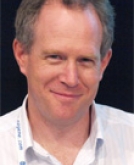 Time/Date: 9:30-11:00 a.m., Friday, November 7
Time/Date: 9:30-11:00 a.m., Friday, November 7Location: Hesler Biology, Room 427
Speaker: Miles Davenport, Centre for Vascular Research, Univ. of New South Wales
Topic: Immune control of malaria: Modelling infection in patient cohorts and in mice.
Abstract: Professor Miles Davenport is an MD-PhD from Sydney, Australia, who uses modeling approaches to understand infection and immunity. He will present recent work on understanding natural immunity to infection and the dynamics of human infection with both P. falciparum and P. vivax malaria. In addition, he will discuss the results of a novel experimental and modeling approach to directly measure the rates of parasite replication and clearance in vivo in murine malaria infection.
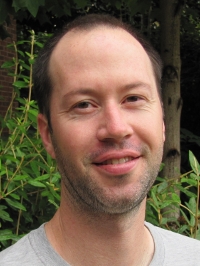 Time/Date: 3:30 p.m., Tuesday, November 4
Time/Date: 3:30 p.m., Tuesday, November 4Location: Hallam Auditorium, Room 206, Claxton Building, 1122 Volunteer Blvd.
Speaker: Jake Ferguson, NIMBioS Postdoctoral Fellow
Topic: Stochastic models of populations in fluctuating environments
Abstract: All animal populations are in environments that fluctuate through time, however data on the processes generating these fluctuations is often not available. One approach to account for this complexity is to study the long-run probabilistic properties of the fluctuations generated by environmental interactions. We will examine what this approach can teach us about specific cases of population-environment interactions and some of the general stochastic properties generated by these interactions. The emphasis will be on how stochastic models can shed light on unobserved ecological interactions and on the fundamental limitations of the approach. We will conclude by examining why inferring the role of environmental covariates on population growth is so difficult, and how reformulating population dynamics using a more fundamental definition of the growth process may shed light on population-environment interactions. Click here for more information. Seminar flyer (pdf).
 Time/Date: 3:30 p.m., Tuesday, October 21
Time/Date: 3:30 p.m., Tuesday, October 21Location: Hallam Auditorium, Room 206, Claxton Building, 1122 Volunteer Blvd.
Speaker: Sandy Kawano, NIMBioS Postdoctoral Fellow
Topic: Towards a unified approach for quantifying phenotypic selection
Abstract: Phenotypic selection is a major driver of adaptive evolution, and plays an important role in generating biodiversity. Despite the multitude of studies on selection analyses and the achievement of various milestones in estimating selection, recent attempts to capture the complexity of selection have made it evident that there are a number of challenges that evolutionary biologists still face. In particular, synthetic analyses have determined that many studies may be overlooking the effects of selection on variances and covariances by omitting nonlinear selection analyses, and that unmeasured traits can change the strength of selection in measured traits. There can be substantial barriers to conducting nonlinear selection analyses due to mathematical and analytical limitations, and some argue that the solution may compromise biological interpretations. A number of new methods have been developed to address some of these issues, but a consensus is yet to be reached. Also, it is currently unknown how changing different modeling parameters affect measures of phenotypic selection. In this talk, I describe the general framework applied to quantify phenotypic selection, existing challenges, and proposed methods for developing a more systematic approach to measure phenotypic selection. Click here for more information. Seminar flyer (pdf).
 Time/Date: 3:30 p.m., Tuesday, October 7
Time/Date: 3:30 p.m., Tuesday, October 7Location: Hallam Auditorium, Room 206, Claxton Building, 1122 Volunteer Blvd.
Speaker: Peter Smouse, Ecology, Rutgers University; NIMBioS Postdoctoral Fellows Invited Distinguished Visitor
Topic: Correlated Biotic and abiotic patterns in Embothrium coccineum: Can Embothrium survive Patagonian climate change?
Abstract: Adaptive radiation and reproductive isolation can determine the biogeographic structure of any species. Embothrium coccineum (Proteaceae) is a South American tree species that dates to the Oligocene, and now spans 200 of latitude and 1500m of elevation on both slopes of the Andes. It is both morphologically and genetically highly variable, as is typical of species spanning such vast geographical regions in both hemispheres. We have deployed hyper-dimensional PCA and CCA methods to explore the correspondence between biotic pattern and current geographic and climatic gradients for 34 populations (934 individuals). Smaller, rounder leaves and particular alleles typify the colder-drier parts of the range, while larger, lanceolate leaves and alternative alleles typify warmer-moister areas. The climate of South America is changing, so we "forward mapped" those patterns onto a future climatic landscape, based on a projected doubling of CO2 for South America. Our analytic approach can be extended to analysis of biotic/abiotic co- patterns in other species facing climatic challenge. Species with sufficient geographic and adaptive substrate, and with sufficient dispersal potential, should be able to "keep up" with the pace of spatial climatic shift. The tolerable climatic regime Embotthrium will clearly shift a bit geographically, but this lineage has survived repeated and dramatic climatic shifts since the Oligocene, and it should also be able to move and adapt quickly enough to meet the present challenge. On balance, it seems clear that Embothrium is here to stay. Click here for more information. Seminar flyer (pdf).
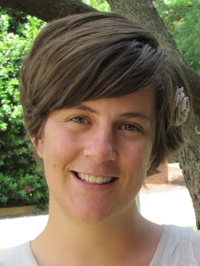 Time/Date: 3:30 p.m., Tuesday, September 23
Time/Date: 3:30 p.m., Tuesday, September 23Location: Hallam Auditorium, Room 206, Claxton Building, 1122 Volunteer Blvd.
Speaker: Angela Peace, NIMBioS Postdoctoral Fellow
Topic: Stoichiometric producer-grazer models incorporating the effects of food quality on grazer dynamics
Abstract: There has been important progress in understanding ecological dynamics through the development of the theory of ecological stoichiometry. By considering the balance of multiple chemical elements in ecological interactions, this fast growing theory provides new constraints and mechanisms that can be formulated into mathematical models. Stoichiometric models incorporate the effects of both food quantity and food quality into a single framework that produce rich dynamics. Here we present producer-grazer Lotka-Volterra type models to investigate the growth response of Daphnia to algae of varying phosphorus:carbon ratios. We incorporate the consequences of both phosphorus limitation as well as phosphorus excess on grazer's growth. These modeling efforts provide insight on the effects of varying nutrient content on grazer dynamics and deepen our understanding of the effects of stoichiometry on the mechanisms governing population dynamics and the interactions between trophic levels. Click here for more information. Seminar flyer (pdf).
 Canceled
CanceledTime/Date: 3:30 p.m., Thursday, September 18
Join us for refreshments at 3:15 p.m
Location: Hallam Auditorium, Room 206, Claxton Building, 1122 Volunteer Blvd.
Speaker: Dr. Zhirong Bao, Developmental Biology, Sloan Kettering Institute
Topic: The making of a worm: Every gene, every cell, every minute
Abstract: The nematode C. elegans, a.k.a the worm, is a major model organism for biomedical research. Its size and transparency make in toto imaging a powerful approach to tackle its biology and achieve synergy with genetics and systems biology. We study C. elegans embryogenesis by combining these approaches. I will discuss our efforts on the following fronts: (1) optical microscopy for long-term live imaging through embryogenesis at single-cell resolution; (2) image analysis for automated cell lineage tracing; (3) genome-wide analysis of the phenotypic landscape and mechanistic models of development; and (4) construction of an interactive 4D atlas of neural development for the entire nervous system.
Click here for more information. Seminar flyer (pdf).
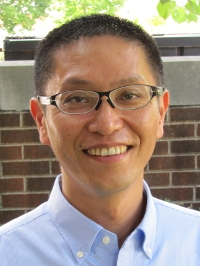 Time/Date: 3:30 p.m., Thursday, September 11
Time/Date: 3:30 p.m., Thursday, September 11Location: Hallam Auditorium, Room 206, Claxton Building, 1122 Volunteer Blvd.
Speaker: Katsuya Tanaka, Research Center for Sustainability and Environment, Shiga Univ., Japan
Topic: Payment mechanisms for managing ecosystem services in Southeast Asia
Abstract: This talk introduces two empirical applications of payment mechanisms for managing ecosystem services through agroforestry practices.The first application is payment for ecosystem services (PES) in the Philippines. Our survey based on hypothetical PES shows that farmers have significant willingness to adopt agroforestry practices under payment schemes. Because of heterogeneity among farmers, the flexible payment outperforms the fixed payment. The second application is eco-certifications in Indonesia. Our results from the propensity score matching show that eco-certification of agroforestry coffee production has a potential to contribute to increasing farmers' income and reducing environmental impact in West Sumatra. Click here for more information.
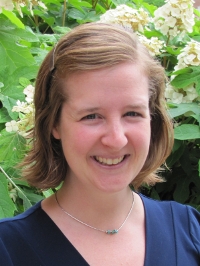 Time/Date: 3:30 p.m., Tuesday, September 9
Time/Date: 3:30 p.m., Tuesday, September 9Join us for refreshments at 3:00 p.m
Location: Hallam Auditorium, Room 206, Claxton Building, 1122 Volunteer Blvd.
Speaker: Elizabeth Hobson, NIMBioS postdoctoral fellow
Topic: Emergent social properties and the evolution of social complexity
Abstract: Group-level properties, such as dominance hierarchies, emerge from the outcomes of individual-level events. Although individuals can gain critical benefits from their position in the hierarchy, we have a limited understanding how real-world hierarchies form or what signals and decision rules individuals use to construct and maintain them in complex groups. A study of aggression in two groups of captive monk parakeets (Myiopsitta monachus) found that a transition to large-scale ordered aggression occurred in newly-formed groups after one week, with individuals thereafter preferring to direct aggression against those nearby in rank. Network motifs in the form of chains of aggression among individuals provided information about relative rank and were highly predictive of behavioral preferences. I present a new theory, the "knowledge-behavior feedback loop," which links an individual's knowledge of rank with its consequent behavior. I use this framework to explain the transition from unstructured to strategic aggression and the formation and persistence of dominance hierarchies in groups capable of both social memory and social inference. I will discuss how this work provides insight into the social and cognitive complexity of the monk parakeet and how this approach could be used more broadly to understand the evolution of social complexity in other species. Click here for more information, Seminar flyer (pdf).
 Time/Date: 2:00 p.m., Thursday, August 7
Time/Date: 2:00 p.m., Thursday, August 7Join us for refreshments at 1:45 p.m
Location: Franklin Classroom, Room 105, Claxton Building, 1122 Volunteer Blvd.
Speaker: Naveen K. Vaidya, Mathematics and Statistics, Univ. of Missouri, Kansas City
Topic: Mathematical modeling of the within-host HIV dynamics
Abstract: The most challenging issues of managing HIV infection within a host are establishment of latently infected cells, emergence of drug resistance, and opioid dependence. In this talk, I will demonstrate how mathematical models that are consistent with experimental data can help address these issues. First, I will show that latently infected cells are largely generated before the initiation of antiretroviral therapy (ART) during early infection and that the density of latently infected cells often decays during initial ART. These results suggest that the latent infection can be limited by early ART during acute HIV infection. Second, I will show that although administration of ART cannot suppress viral load in many patients due to the emergence of resistance, it can alter the viral fitness resulting in an increase of CD4+ T cell count, which should yield clinical benefits. This benefit depends on the cell proliferation rate, which, in some situations, produces sustained T-cell oscillations. Third, I will discuss how opioid dependence can alter viral dynamics, steady state viral load, and basic reproduction number.
For more information, click here.
 Time/Date: 3:30 p.m., Wednesday, April 30
Time/Date: 3:30 p.m., Wednesday, April 30Location: Hallam Auditorium, Room 206, Claxton Building, 1122 Volunteer Blvd.
Speaker: Leah Edelstein-Keshet, Mathematics, Univ. of British Columbia
Topic: Modeling Chemical Patterns in Cell Motility
Abstract: In order to fight infection or heal wounds, mammalian cells such as white blood cells (neutrophils or macrophages) crawl in response to chemical signals, a process termed chemotaxis. To do so, they rearrange their internal structure (actin cytoskeleton) to become polarized. Then the front protrudes and the rear retracts to produce motility. How is this process coordinated? Regulating this process are proteins (small GTPases) that form a chemical "prepattern" inside the cell. Interactions and crosstalk between these proteins results in the spontaneous self-organization of the intracellular patterns, and thence the polarization and motility. In this seminar I will describe modeling work in my group that addresses this topic in a sequence of models of various levels of detail. I will also present some computational techniques for understanding what the models predict and examples of work with experimental colleagues to validate the models. Click here for more information. Seminar flyer (pdf).
 This seminar has been CANCELED.
This seminar has been CANCELED.Time/Date: 3:30 p.m., Tuesday, April 15
Location: Hallam Auditorium, Room 206, Claxton Building, 1122 Volunteer Blvd.
Speaker: Michael Lynch, Biology, Indiana Univ., Bloomington
Topic: Mutation, Drift and the Origin of Subcellular Features
Abstract: Understanding the mechanisms of evolution and the degree to which phylogenetic generalities exist requires information on the rate at which mutations arise and their effects at the molecular and phenotypic levels. Although procuring such data has been technically challenging, high-throughput genomic sequencing is rapidly expanding our knowledge in this area. Most notably, information on spontaneous mutations, now available in a wide variety of organisms, implies an inverse scaling of the mutation rate (per nucleotide site) with the effective population size of a lineage. The argument will be made that this pattern naturally arises as natural selection pushes the mutation rate down to a lower limit set by the power of random genetic drift rather than by intrinsic molecular limitations on repair mechanisms. This drift-barrier hypothesis has general implications for all aspects of evolution, including the performance of enzymes and the stability of proteins. The fundamental assumption is that as molecular adaptations become more and more refined, the room for subsequent improvement becomes diminishingly small. If this hypothesis is correct, the population-genetic environment imposes a fundamental constraint on the level of perfection that can be achieved by any molecular adaptation, and indeed all adaptations. Additional examples consistent with this hypothesis will be drawn from recent observations on the transcription error rate and on the evolution of the oligomeric states of proteins. Click here for more information. Seminar flyer (pdf).
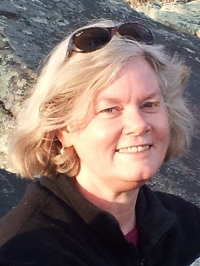 Time/Date: 3:30 p.m., Tuesday, April 1
Time/Date: 3:30 p.m., Tuesday, April 1Location: Hallam Auditorium, Room 206, Claxton Building, 1122 Volunteer Blvd.
Speaker: Yetta Jager, Environmental Sciences Division, Oak Ridge National Laboratory
Topic: Getting the Most Out of Rivers: Sustainable Hydropower Development
Abstract: What is the best way to arrange dams within river basins to benefit society? Recent interest in this question has grown in response to the world-wide trend toward developing hydropower as a source of renewable energy in Asia and South America and with the movement toward removing unnecessary dams in the US. Hydropower development has rarely been planned with the goal of providing society with a portfolio of ecosystem services into the future. I synthesized a review of river basin design around four questions related to spatial decisions: Is it better to build fewer main stem dams or more tributary dams? Should dams be clustered or distributed among distant subbasins? Where should dams be placed along a river? And at what spatial scale should decisions be made? The following design principles emerged from our review: 1) concentrate dams within a sub-set of tributary watersheds and avoid downstream main stems, 2) disperse freshwater reserves among the remaining tributary catchments, 3) ensure that habitat provided between dams will support and retain production, and 4) formulate spatial decision problems at the scale of large river basins. To illustrate this, I developed a simple model for the American eel (Anguilla rostrata). For a randomly generated river network, I produced a Pareto-optimal frontier of solutions demonstrating where power dams should be located to maximize two objectives: power generation and eel survival. Click here for more information. Seminar flyer (pdf).
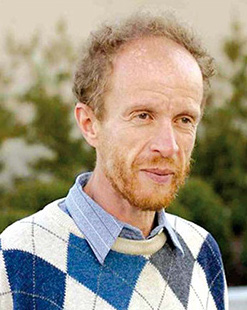 Time/Date: 3:30 p.m., Tuesday, March 25
Time/Date: 3:30 p.m., Tuesday, March 25Location: Hallam Auditorium, Room 206, Claxton Building, 1122 Volunteer Blvd.
Speaker: Eugene V. Koonin, National Center for Biotechnology Information, National Library of Medicine, National Institutes of Health, and a NIMBioS Postdoctoral Fellows Invited Distinguished Visitor
Topic: Generalization of the Central Models of Molecular Evolution in the (Post) Genomic Era
Abstract: The advances of comparative genomics and phylogenomics call for replacement of the key models of molecular evolution by a new generation of more general models. The traditional view of a genome of an individual organism or species has been supplanted by the pangenome concept. It has become apparent that the rates of gene loss and gain far exceed the rates of nucleotide substitution, at least in prokaryotes. Therefore, the pangenome, i.e. the entirety of the genes available to a given species, is typically is much larger than any individual genome, extremely dynamic and variable between different groups of microbes. I will present an overview of the genome dynamics and pangenome size estimates across the microbial world. The dynamic genome evolution and the do minance of horizontal gene transfer (HGT) in the evolution of prokaryotes also undermines the classical Tree of Life (TOL) concept. The notion of a single TOL is giving way to the model of a phylogenetic network that, however, can be shown to encompass a tree-like central trend. Further, genome-wide comparison of phylogenetic trees bears on the Molecular Clock model. It has been long known that the Molecular Clock is substantially overdispersed. I will show that the new model of Universal Pacemaker of genome evolution that only requires the conservation of relative rates of gene evolution, in contrast to the conservation of absolute rates inherent in Molecular Clock, yields a better fit to the phylogenomic data for diverse organisms. The new, general models of evolution do not refute the classic models but include them as extreme cases, in a pattern that appears common in the history of science. Click here for more information. Seminar flyer (pdf).
 Time/Date: 3:30 p.m., Thursday, February 27
Time/Date: 3:30 p.m., Thursday, February 27Location: Hallam Auditorium, Room 206, Claxton Building, 1122 Volunteer Blvd.
Speaker: Nicole Mideo, Ecology & Evolutionary Biology, Univ. of Toronto
Topic: Explaining the complex lives of malaria parasites
Abstract: Despite a wealth of biomedical research into the pathogenesis of infectious diseases, little is known about the basic biology of their etiological agents. For many parasites, we lack satisfying answers to questions such as: what is it specifically about the interaction between hosts and parasites that results in disease symptoms? How do these interactions differ between closely related parasite strains or species? And, which factors have shaped parasite traits that determine harm to host and infectiousness? Using a combination of theoretical and experimental approaches, my work has revealed processes that underlie within-host dynamics of experimental rodent malaria infections and how differences in these processes give rise to the variation observed in patterns of disease across parasite genotypes. I will present results that demonstrate the importance of resource availability and competition and show that such 'bottom-up' mechanisms can explain phenomena that are often attributed to immune-mediated processes. Finally, I will show how verbal hypotheses pervading the literature to explain why malaria parasites seem to invest so little in reproduction (transmission) do not stand up to formal, mathematical scrutiny. Click here for more information. Seminar flyer (pdf).
 Time/Date: 3:30 p.m., Tuesday, February 25
Time/Date: 3:30 p.m., Tuesday, February 25Location: Hallam Auditorium, Room 206, Claxton Building, 1122 Volunteer Blvd.
Speaker: Virginia Dale, Director, Center for BioEnergy Sustainability, ORNL; Adjunct Faculty, Ecology & Evolutionary Biology, UTK
Topic: Incorporating Bioenergy Into Sustainable Landscape Designs
Abstract: A spatially explicit collaborative plan for resource allocation and management, landscape design involves multiple scales, fits into existing systems, and maintains or enhances services. We describe an approach for landscape design that focuses on bioenergy production systems, which integrates into other components of the land, environment and socioeconomic system. The design for a particular area is developed with the involvement of key stakeholders. Appropriately applied, landscape design can guide choices toward more sustainable provision of bioenergy and other services. This approach encapsulates monitoring and assessment of a suite of indicators for soil quality, water quality and quantity, greenhouse gases, biodiversity, air quality, and productivity as well as socioeconomic considerations. The landscape design approach requires attention to site selection and environmental effects when making choices about locations, type(s) of feedstock, transport of feedstock to the refinery, refinery processing, and distribution of bioenergy products and services. The approach includes monitoring and reporting of measures of sustainability along the bioenergy supply chain and within specific contexts. Landscape designs must be implemented in a way that is doable from the perspective of producers along the supply chain. Hence, clear communication of environmental and socioeconomic opportunities and concerns is required to participants in production and users of the energy. Click here for more information. Seminar flyer (pdf).
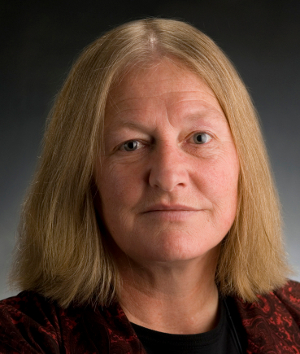 Time/Date: 3:30 p.m., Tuesday, February 18
Time/Date: 3:30 p.m., Tuesday, February 18Location: Hallam Auditorium, Room 206, Claxton Building, 1122 Volunteer Blvd.
Speaker: Kay Holekamp, Distinguished Professor of Zoology, Michigan State Univ.
Topic: The Evolution of Intelligence
Abstract: Despite huge metabolic costs of neural tissue, some mammals and birds exhibit relatively large brain:body ratios and relatively sophisticated cognitive abilities. However, it is not clear whether big brains and great intelligence have generally evolved to cope with social complexity, complexity in the physical environment, neither or both. Primatologists have claimed that non-primate animals rarely form aggregations that impose rigorous cognitive demands and that their evolutionary success seldom depends on intelligence. They have therefore concluded that non-primate animals have no need to solve social problems that require knowledge of kinship, rank, or past history of give-and-take, as do many primates. Here I evaluate this assertion in light of recent data from non-primate mammals, focusing in particular on mammalian carnivores. It appears that that there has been remarkable convergence between primates and non-primate mammals with respect to the selection pressures, particularly social complexity, favoring the evolution of intelligence. However, recent data also suggest that the evolution of brains and behavioral flexibility has been considerably less constrained in primates than in mammalian carnivores. Recent work suggests that both social and non-social variables shape brain evolution, as do phylogenetic relationships and recent history. Click here for more information. Seminar flyer (pdf).
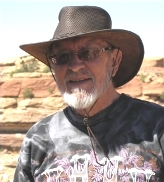 This seminar has been rescheduled for noon, Thursday, January 30
This seminar has been rescheduled for noon, Thursday, January 30Time/Date: 12:00 p.m., Thursday, January 30
Location: Hallam Auditorium, Room 206, Claxton Building, 1122 Volunteer Blvd.
Speaker: Tom Hallam, University of Tennessee Professor Emeritus
Topic: Reflections
Abstract: Join us for a special talk with the esteemed Tom Guy Hallam, Professor Emeritus of UT's Departments of Ecology and Environmental Biology and Mathematics, to be held in the newly renovated Tom Hallam Auditorium at NIMBioS. Dr. Hallam received his Ph.D. from the University of Missouri in 1965 and began his career as a faculty member in the Department of Mathematics at Florida State University, working in the area of comparison theorems for ordinary differential equations. While at Florida State, he initiated a mathematical modeling course. As his interest in applying mathematics to environmental problems took off, he began taking courses in oceanography and ecology. In 1977, Hallam accepted a joint professorship at UT. During the 1980s and 1990s, Hallam's research group integrated ecotoxicology and population dynamics into a watershed quality assessment tool for the U.S. Environmental Protection Agency. His research in using mathematical models to solve problems in ecotoxicology and ecology inspired him to begin an interdisciplinary program at UT combining mathematics and biology. The program seeks to apply mathematical theory to problems in the biological sciences. Dr. Hallam's talk will cover recollections and comments about the earlier days of mathematical and theoretical ecology, the history of theoretical and computational biology at UT; the talented faculty and graduate students who have been associated with the program, which culminated in NIMBioS. Dr. Hallam's seminar may also cover topics related to white nose syndrome and AIDS. Click here for more information. Seminar flyer (pdf).
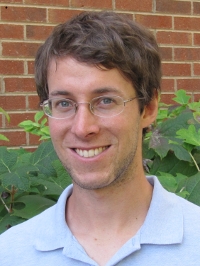 Time/Date: 3:30 p.m., Tuesday, January 14
Time/Date: 3:30 p.m., Tuesday, January 14Location: Room 205, Claxton Building, 1122 Volunteer Blvd.
Speaker: Sean Hoban, NIMBioS postdoctoral fellow
Topic: How to plan an effective and efficient population genetics sampling strategy: Markers, samples, and spatial considerations
Abstract: Genetic biodiversity contributes to species' evolutionary potential, ecosystem function, and human prosperity (e.g., agriculture). Preserving genetic resources during rapid environmental change is a pressing scientific and societal challenge. To meet this challenge, it is important to ensure that conservation researchers utilize well-designed and robust analytical methods and sampling/monitoring protocols. Unfortunately, many genetic studies are undertaken without knowledge of how many populations, genetic markers or individuals are needed. With colleagues, I developed software (Hoban et al. 2013, Methods in Ecology and Evolution) that calculates power of proposed sampling strategies for five study goals, including performing genetic assignment tests, using ancient DNA, and detecting genetic differentiation. I will explain how I used the software to highlight several concerns seldom considered during study planning: (a) power is rarely a linear function of adding markers/samples; (b) power is situation (species and history) specific; (c) some signals are too weak to detect. I will also explain my current interests in planning ex situ conservation collections (e.g., seed banks). At NIMBioS, I plan to optimize seed sampling from plant populations under local and range-wide population structure, while considering various strategies including those that are spatially biased or otherwise restricted. This project will result in general guidelines as well as software for customizing collections to particular species. Click here for more information. Seminar flyer (pdf).
NIMBioS
1122 Volunteer Blvd., Suite 106
University of Tennessee
Knoxville,
TN 37996-3410
PH: (865) 974-9334
FAX: (865) 974-9461
Contact NIMBioS


